So I’ve been digging through Apple’s tutorial videos for developers about Apple Silicon Macs, and I’ve came to the conclusion that Apple’s upcoming ARM-based Macs will NOT have discrete GPUs. So the future Apple Silicon 16” MacBook Pro and every iMac including even the iMac Pro will no longer have dedicated graphics chips. Don’t get me wrong, Apple is still planning on releasing Intel-based Macs over the next 2 years, but Macs with Apple Silicon chips will not have discrete GPUs.
The only Mac that I’m not 100% certain about is the Mac Pro, because it’s a high-end machine for a very small market, but I think I know how Apple is going to handle that.
So let’s get into the evidence that I found that points to Apple ditching discrete GPUs.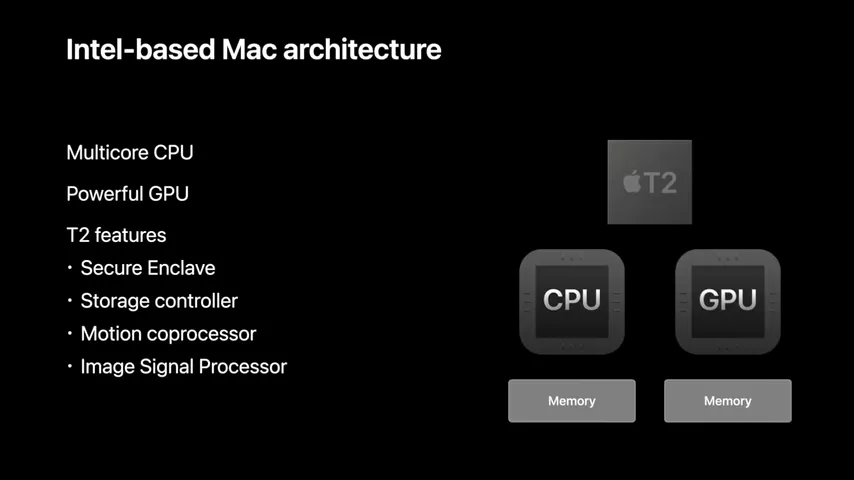 In this developer video, Gavin from Apple mentioned that Intel-based Macs have a CPU, a discrete GPU, memory for each of them, and a T2 chip on some Macs. This is what he says about Apple Silicon Macs.
In this developer video, Gavin from Apple mentioned that Intel-based Macs have a CPU, a discrete GPU, memory for each of them, and a T2 chip on some Macs. This is what he says about Apple Silicon Macs.
The new Apple Silicone Macs combine all this components into single system on the chip or SoCs.
Yes, the CPU and GPU together on one chip, just like Apple is doing with their iPhones and iPads. But why would they do this? Here’s his answer.
Building everything into one chip gives the system a unified memory architecture. This means the GPU and CPU are working over the same memory. Graphic resources such as textures, images can be shared between CPU and GPU efficiently with no overhead as there is no need to copy data acros PCI-e bus.
So basically, since everything i s in one chip, they can quickly share memory resources and communicate much quicker than if they were using a discrete GPU which needs to copy data over a PCI express bus.
This is basically saying that Apple is preferring integrated graphics instead of discrete graphics thanks to higher efficiency.
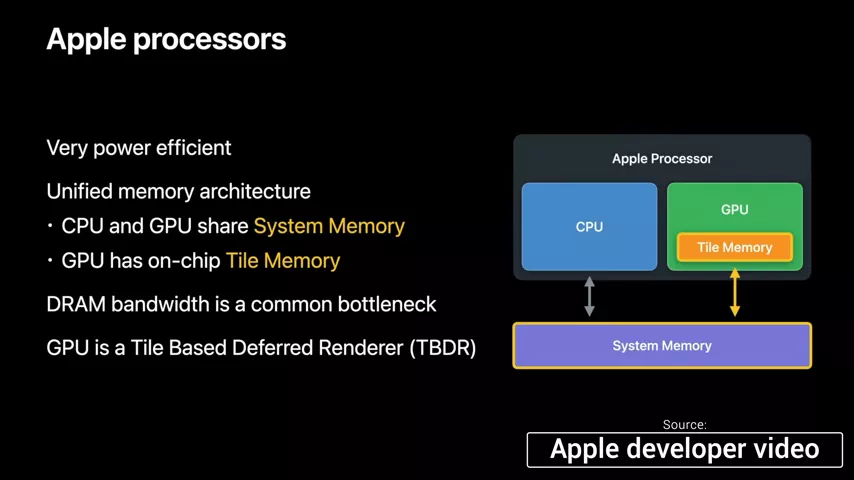 In another developer video, Apple mentions that their GPUs will not have VRAM like traditional graphics cards do, they will instead use on-chip Tile Memory that communicates with System Memory that is shared with the CPU.
In another developer video, Apple mentions that their GPUs will not have VRAM like traditional graphics cards do, they will instead use on-chip Tile Memory that communicates with System Memory that is shared with the CPU.
I found an Apple developer article that again confirms that the GPU and the CPU on Apple Silicon share memory. Which currently, on Intel-based systems, the GPU itself doesn’t have direct access to memory.
Only the CPU can manage the RAM if it decides to give some to the GPU. But with Apple Silicon Macs, the GPU has direct access to the system memory.
Back to that same article that I mentioned, it says this:
Don’t assume a discrete GPU means better performance. The integrated GPU in Apple processors is optimized for high performance graphics tasks
So basically, Apple believes that their integrated GPUs are going to be so efficient and optimized that they’ll no longer require discrete GPUs.
I’ve heard a lot of people claiming that Apple will not be able to match up to the RAW performance of other graphics chips from AMD and Nvidia. But I’m here to say that Apple doesn’t have to. If they can pull off excellent efficiency and optimization, then they can match or beat the real-world performance of other discrete GPUs with less RAW graphics performance.
In fact, some Apple systems are already outperforming other high-end graphics cards in real-world use thanks to higher utilization and better optimization.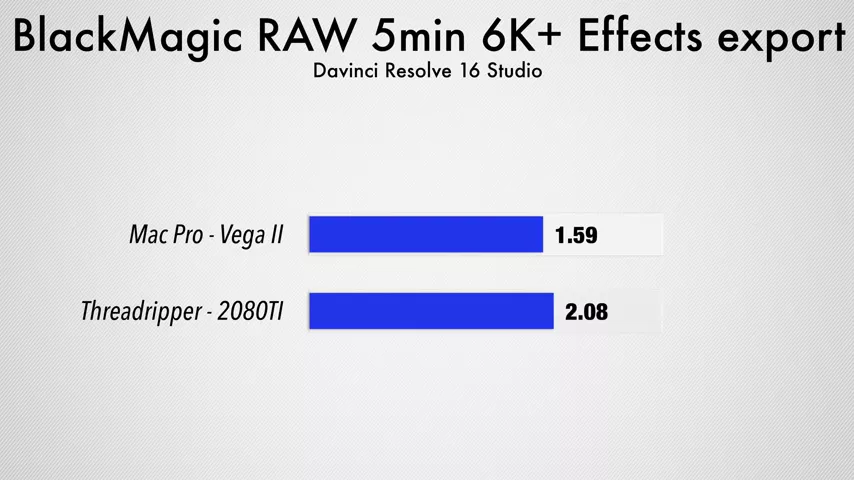 And this is weird to see considering the huge difference in RAW graphics performance.
And this is weird to see considering the huge difference in RAW graphics performance.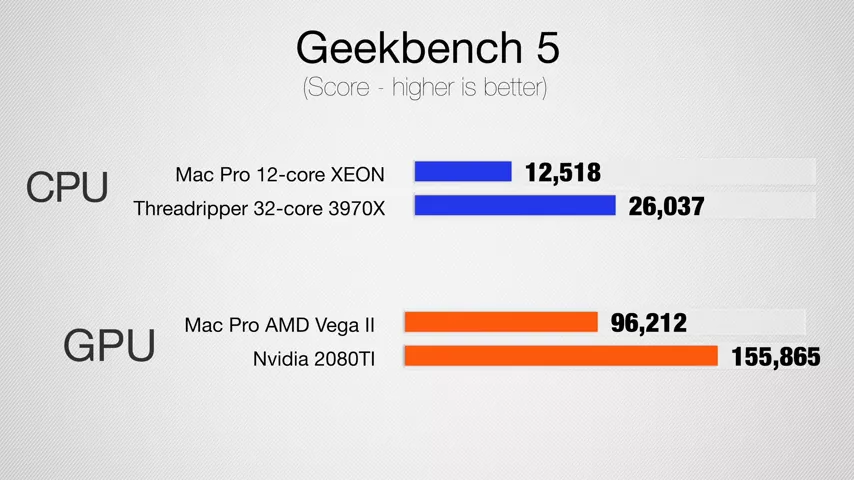 And this is before the new technologies that Apple is bringing to their ARM-based Macs, so let’s discuss some of those.
And this is before the new technologies that Apple is bringing to their ARM-based Macs, so let’s discuss some of those.
Of course, there’s the unified memory architecture which makes it much more efficient.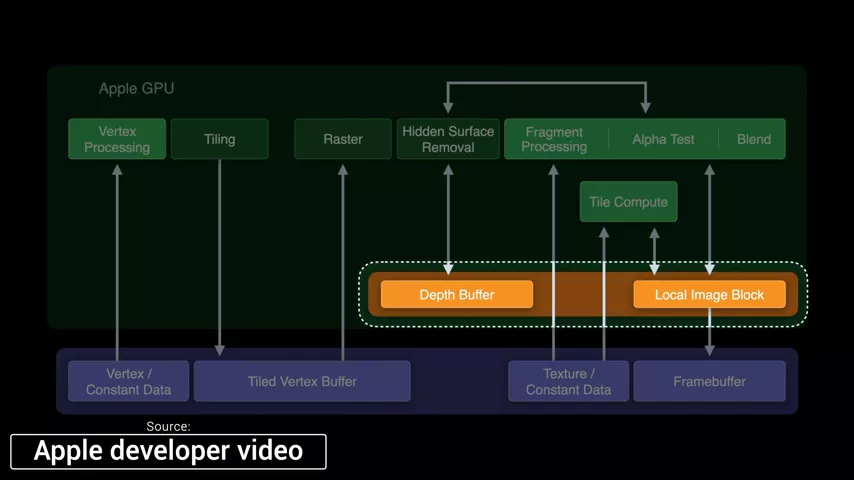 Apple’s GPUs are designed to work very efficiently to minimize system bandwidth to reduce traffic so it doesn’t reach the maximum memory bandwidth. Apple GPUs also support hidden surface removal, with the goal of only rendering the pixels it needs to, being more efficient by eliminating unnecessary shading.
Apple’s GPUs are designed to work very efficiently to minimize system bandwidth to reduce traffic so it doesn’t reach the maximum memory bandwidth. Apple GPUs also support hidden surface removal, with the goal of only rendering the pixels it needs to, being more efficient by eliminating unnecessary shading.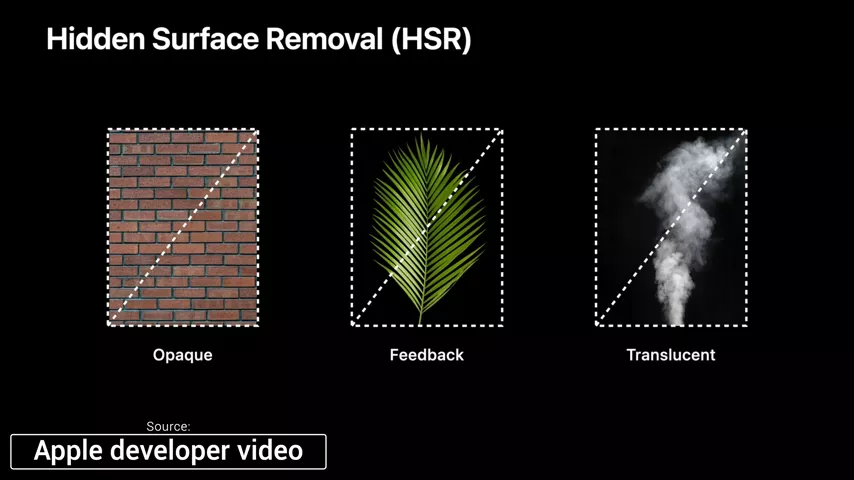 Apple GPUs also use the new TBDR GPU architecture which allows you to do shading, lighting, and compositing using just the GPU and it’s dedicated Tile memory before finally accessing the system memory, which in turn reduces memory bandwidth.
Apple GPUs also use the new TBDR GPU architecture which allows you to do shading, lighting, and compositing using just the GPU and it’s dedicated Tile memory before finally accessing the system memory, which in turn reduces memory bandwidth.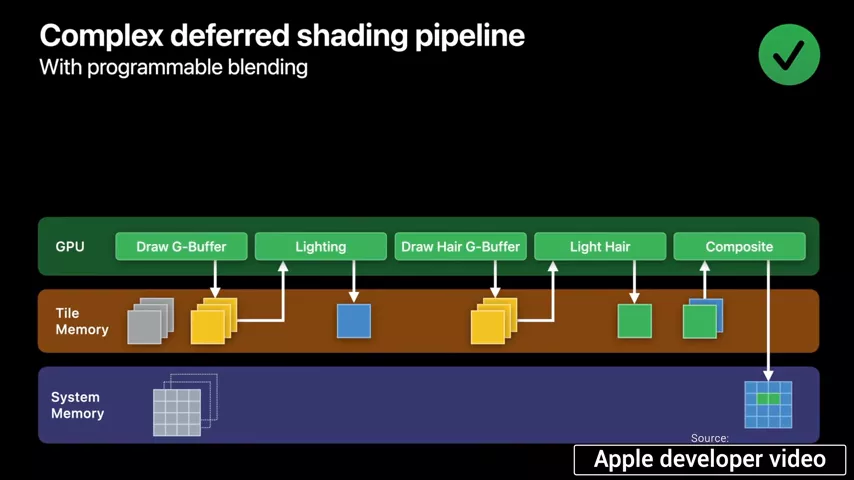 Without this, you can see how many times it has to access system memory to get this complex workflow done.
Without this, you can see how many times it has to access system memory to get this complex workflow done.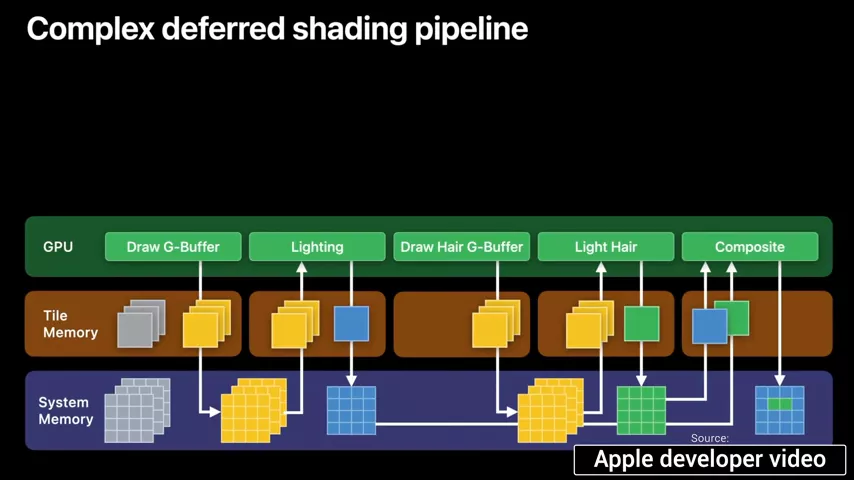 So basically, Apple GPUs are focused on being extremely efficient, which improves performance, and since Apple is in control of both the hardware and the software, they’ll be able to make sure everything is incredibly well optimized. We’ll no longer have to deal with driver issues of new discrete graphics chips like the whole issue with the 16” MacBook overheating and getting loud when connected to an external display.
So basically, Apple GPUs are focused on being extremely efficient, which improves performance, and since Apple is in control of both the hardware and the software, they’ll be able to make sure everything is incredibly well optimized. We’ll no longer have to deal with driver issues of new discrete graphics chips like the whole issue with the 16” MacBook overheating and getting loud when connected to an external display.
If you think about it, Apple’s iPhone 11 is still the most powerful smartphone in the world, and that’s only because Apple controls both the hardware and the software. So thanks to all of that new Apple Silicon technology working together, Apple could get away with a single powerful ARM chip with both the CPU and GPU integrated, without needing dedicated graphics.
I’ve watched every single Apple developer video that discusses Apple Silicon Macs, and I didn’t see any mention at all of Apple using discrete graphics, so I’m confident that the future Apple Silicon 16” MacBook Pro and every iMac will no longer use discrete graphics. I think they’ll first update the Macs that currently don’t use discrete graphics like the 13” MacBook Pro, the MacBook Air and the Mac Mini, giving them extra time to prepare before switching the higher-end Macs over to their Apple Silicon.
But what about the Mac Pro? Well, this is the main dilemma because it’s meant to be upgradable, and it has a ton of PCI Express ports for a reason, so let’s get into how I think Apple will handle the Mac Pro.
First off, Apple confirmed that they have Intel-based Macs in the pipeline right now, and since they mentioned a two-year transition period, they can technically release an updated Intel-Based Mac Pro right before the 2 years is over. And then if they wait another two years before updating the Mac Pro again and finally giving it an Apple Silicon processor, they’ll have a total of 4 years of experience and optimization with the new ARM-based chips before they announce how they’ll implement it into the Mac Pro.
This also means there will be 4 more WWDC events where they could potentially announce new Apple-made discrete GPUs exclusively for the new Mac Pro, or maybe they’ll announce that they’re keeping support for AMD graphics cards since they already have Metal-support built-in. And since we already know that Apple is continuing to support Thunderbolt, it would make sense for them to support upgradable dedicated graphics on the Mac Pro. But for every other Apple Silicon Mac, including the 16” MacBook Pro, I believe that we should expect Apple to ditch discrete graphics. If you disagree with me, comment your thoughts on this down below.
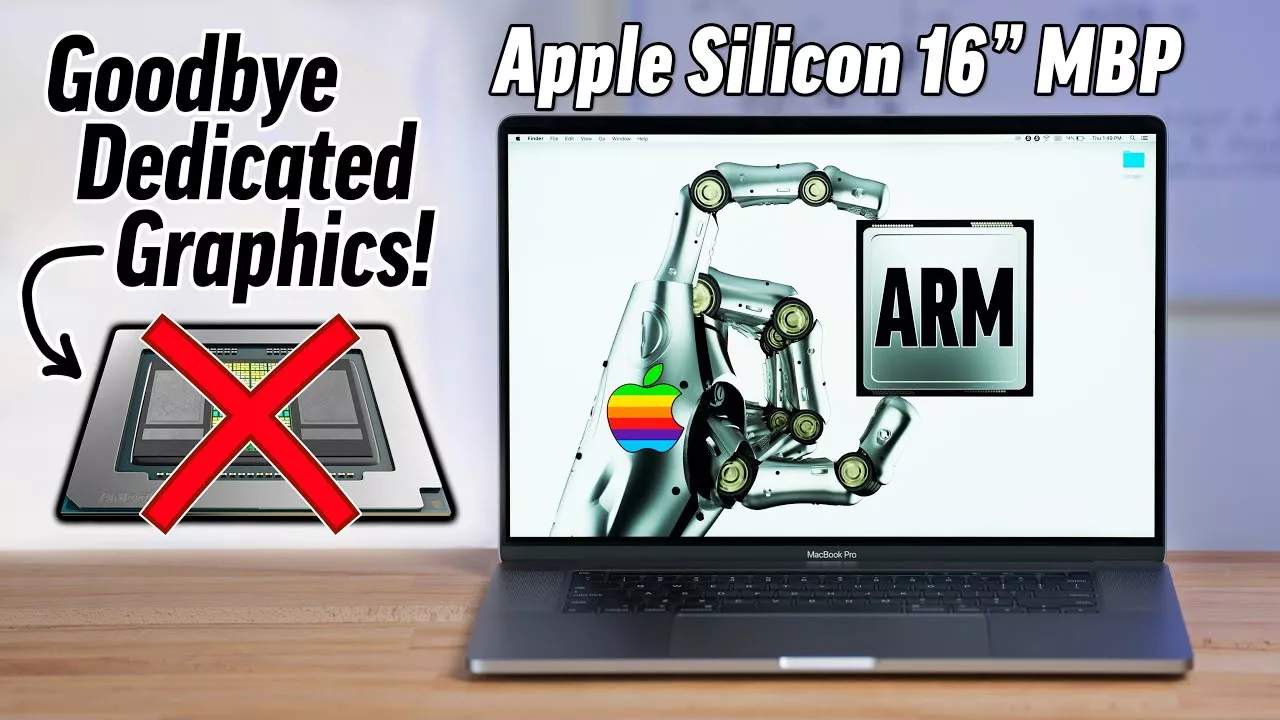

Comments (1)